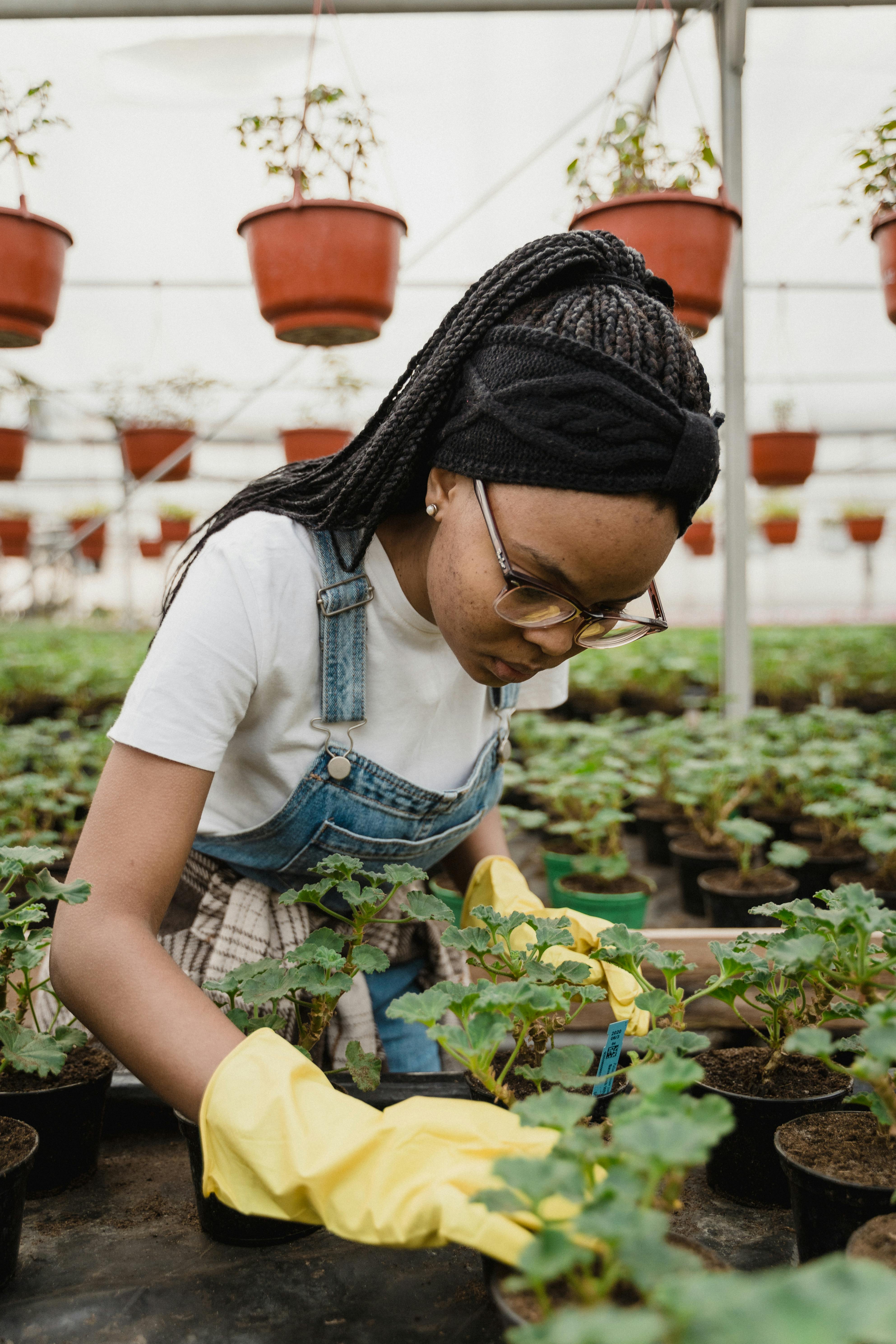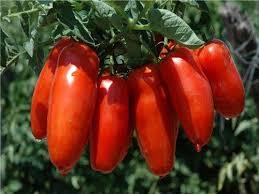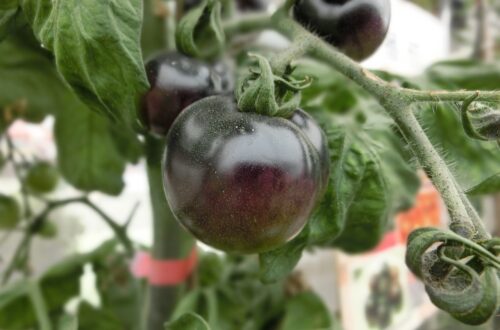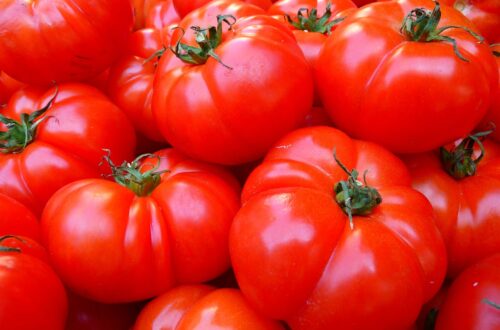
How to Pollinate Tomatoes by Hand: A Complete Guide for Gardeners
Have you ever wondered why your tomato plants are full of flowers but not many fruits? Or maybe you’re growing tomatoes indoors or in a greenhouse, where natural pollinators like bees are scarce. If so, hand pollination might be the solution you need! Hand-pollinating tomatoes is a simple yet effective technique that can dramatically increase your yield and ensure your plants produce plenty of juicy, flavorful fruits. In this article, we’ll explore everything you need to know about hand pollination, from why it’s necessary to the step-by-step process of doing it yourself.
Why Pollinate Tomatoes by Hand?
Tomato plants are self-pollinating, meaning that each flower contains both male (anther) and female (stigma) reproductive organs. In theory, tomatoes can pollinate themselves with the help of wind, insects, or even the occasional brush against the plant. However, in certain conditions, like indoor gardening, greenhouses, or areas with low insect activity, natural pollination may not be enough to set fruit.
Hand pollination comes into play when:
- Indoor or Greenhouse Growing: Without wind or insects, your tomatoes might struggle to pollinate on their own.
- Poor Fruit Set: If you notice lots of flowers but few fruits, manual pollination can help ensure every flower gets fertilized.
- Boosting Yields: Hand pollination can maximize fruit production, leading to a more abundant harvest.
By taking a few minutes to hand-pollinate your tomato plants, you can significantly increase your chances of a successful and bountiful crop.

Understanding Tomato Flower Anatomy
Before you start hand-pollinating, it’s helpful to understand the basic anatomy of a tomato flower. This will make the process more intuitive and ensure you’re targeting the right parts of the flower.
1. The Stamen (Male Part)
The stamen consists of the anther and filament. The anther is where pollen is produced, and it’s located at the tip of the filament. In tomato flowers, the anthers are fused together, forming a cone that surrounds the female part of the flower.
2. The Pistil (Female Part)
The pistil is the female reproductive organ and consists of the stigma, style, and ovary. The stigma is the sticky tip that receives pollen, leading to fertilization. It’s located at the center of the flower, surrounded by the anther cone.
3. Pollen
Pollen is the fine, powdery substance produced by the anthers. For fertilization to occur, pollen must be transferred from the anthers to the stigma, where it will germinate and fertilize the ovules in the ovary, leading to fruit development.
When to Pollinate Tomato Flowers by Hand
Timing is crucial when it comes to hand-pollinating tomatoes. You’ll want to pollinate when the flowers are fully open and the pollen is viable. This typically happens during the morning hours when temperatures are cooler, and the humidity is moderate.
1. Flower Maturity
Tomato flowers are usually ready for pollination a few days after they open. You can tell a flower is mature and ready to be pollinated when the petals are fully extended, and the yellow anthers are visible.
2. Best Time of Day
The best time to hand-pollinate is in the morning, between 10 a.m. and noon. During this time, pollen is most likely to be fresh and viable. Pollination during the early hours also takes advantage of the natural dew, which can help the pollen stick to the stigma.
3. Temperature and Humidity
Tomato pollen is most viable when temperatures are between 70°F and 85°F (21°C and 29°C) and humidity levels are around 40-70%. Extreme temperatures and high humidity can cause pollen to clump or become non-viable, reducing the chances of successful pollination.
Tools for Hand Pollination
Hand-pollinating tomatoes doesn’t require any fancy equipment. In fact, you probably already have everything you need at home. Here are some tools that can make the process easier:

1. Small Paintbrush or Cotton Swab
A small, soft paintbrush or cotton swab is perfect for transferring pollen from one flower to another. These tools allow you to gently collect pollen from the anthers and apply it to the stigma without damaging the flower.

2. Electric Toothbrush
An electric toothbrush is a handy tool for vibrating the flowers, mimicking the natural buzz of bees. The vibration helps release pollen from the anthers, making it easier to collect and transfer.
3. Your Finger
In a pinch, you can use your finger to pollinate the flowers. Simply tap or rub the anthers gently to release pollen and then transfer it to the stigma. While not as precise as other methods, this can still be effective.
Step-by-Step Guide to Hand Pollinating Tomatoes

Now that you have your tools ready, it’s time to start pollinating! Follow these steps to ensure successful hand pollination of your tomato plants.
1. Identify Mature Flowers
Begin by selecting flowers that are fully open and appear mature. Look for flowers with bright yellow petals and a prominent anther cone. These flowers are more likely to be ready for pollination.
2. Collect Pollen
If you’re using a paintbrush or cotton swab, gently brush it against the anther cone to collect pollen. The pollen will appear as a fine, yellow powder on the brush or swab. If you’re using an electric toothbrush, turn it on and place it near the base of the flower, close to the anther cone. The vibration should cause the pollen to release, which you can then collect with your brush or swab.
3. Transfer Pollen to the Stigma
Carefully apply the collected pollen to the stigma at the center of the flower. Gently touch the brush, swab, or your finger to the stigma, making sure some pollen sticks. Be careful not to damage the flower during this process.
4. Repeat the Process
Continue the process with other flowers on the same plant or different plants. Hand pollinating multiple flowers increases your chances of a higher fruit set.
5. Monitor the Results
After hand pollinating, keep an eye on your plants to see if the flowers begin to develop into fruit. Within a few days, you should notice the petals starting to wilt and the ovary at the base of the flower swelling, which indicates successful pollination.
Troubleshooting Common Pollination Problems

Even with careful hand pollination, you might encounter some issues that affect fruit set. Here are some common problems and how to address them:
1. Flowers Drop Without Setting Fruit
If your tomato flowers drop without setting fruit, it could be due to environmental stress, such as extreme temperatures, poor humidity, or nutrient deficiencies. Ensure your plants are well-watered, properly fed, and protected from extreme weather.
2. Inconsistent Pollination
If some flowers are setting fruit while others are not, it may be due to inconsistent pollination. Try to be thorough when hand pollinating, ensuring each flower receives enough pollen.
3. Pollen Clumping
High humidity can cause pollen to clump, making it difficult to transfer. If you notice clumping, try hand pollinating during drier parts of the day or use an electric toothbrush to help dislodge the pollen.
4. Low Fruit Quality
If the fruits that do set are small or misshapen, it could be a sign of poor pollination or nutrient imbalances. Ensure your plants are receiving adequate nutrients, particularly calcium, which is essential for fruit development.
Maximizing Tomato Yield with Hand Pollination

Hand pollination is just one part of ensuring a successful tomato harvest. Here are some additional tips to help maximize your yield:
1. Regular Watering
Tomatoes need consistent moisture, especially during flowering and fruiting. Water your plants deeply and regularly to keep the soil evenly moist. Avoid overhead watering, as wet foliage can promote disease.
2. Proper Feeding
Tomatoes are heavy feeders, so provide them with a balanced fertilizer throughout the growing season. A fertilizer high in phosphorus and potassium is ideal for promoting flowering and fruiting.
3. Pruning and Staking
Pruning helps improve air circulation and light penetration, reducing the risk of disease and encouraging more fruit production. Stake or cage your plants to keep them upright and prevent the fruits from touching the ground.
4. Controlling Pests and Diseases
Keep an eye out for common tomato pests like aphids, whiteflies, and hornworms, which can damage your plants and reduce yield. Use organic pest control methods or insecticidal soap to keep these pests at bay. Practice crop rotation and remove any diseased plant material to prevent the spread of diseases like blight and wilt.
5. Optimizing Growing Conditions
Ensure your tomato plants are growing in optimal conditions with plenty of sunlight, good air circulation, and well-drained soil. Mulch around the base of the plants to conserve moisture and suppress weeds.
Hand Pollination in Different Growing Environments

Whether you’re growing tomatoes indoors, in a greenhouse, or outdoors, hand pollination can be adapted to suit different growing environments.
1. Indoor Growing
Indoor gardeners often face challenges with pollination due to the lack of natural pollinators like bees. Hand pollination is essential in this environment to ensure fruit set. Regularly check your plants for open flowers and hand pollinate as needed. Additionally, make sure your indoor garden has good air circulation to help with the natural movement of pollen.
2. Greenhouse Growing
In greenhouses, where humidity and temperature can be controlled, hand pollination can be a highly effective way to maximize fruit production. Use an electric toothbrush or paintbrush to pollinate the flowers, and monitor the humidity levels to prevent pollen clumping.
3. Outdoor Growing
Even in outdoor gardens, where wind and insects contribute to pollination, hand pollination can help boost yields. This is especially useful during periods of low pollinator activity or when you’re aiming for a particularly large harvest.
Advantages of Hand Pollination
Hand pollination offers several benefits that can make a noticeable difference in your tomato harvest:
1. Increased Fruit Set
By manually transferring pollen, you can ensure that each flower has the best chance of developing into fruit, leading to a higher overall yield.
2. Improved Fruit Quality
Consistent and thorough pollination often results in larger, more uniform fruits with fewer deformities.
3. Better Control
Hand pollination gives you more control over the pollination process, allowing you to optimize fruit set even in less-than-ideal growing conditions.
4. Enhanced Indoor and Greenhouse Production
For indoor and greenhouse gardeners, hand pollination is a reliable method to achieve successful fruiting without relying on natural pollinators.
Hand-pollinating tomatoes is a simple, hands-on technique that can lead to more fruitful plants and a better harvest. Whether you’re growing tomatoes indoors, in a greenhouse, or in an outdoor garden, taking a few moments to manually pollinate your plants can make a significant difference in the number and quality of fruits you produce.
Remember, the key to successful hand pollination is timing, technique, and consistency. By understanding the anatomy of tomato flowers, using the right tools, and following the steps outlined in this guide, you can ensure that your tomato plants are well-pollinated and ready to yield a bountiful harvest.
So, grab your paintbrush, cotton swab, or electric toothbrush, and start hand-pollinating your tomato plants today. With a little effort, you’ll be rewarded with an abundance of delicious, homegrown tomatoes that are the pride of your garden.




